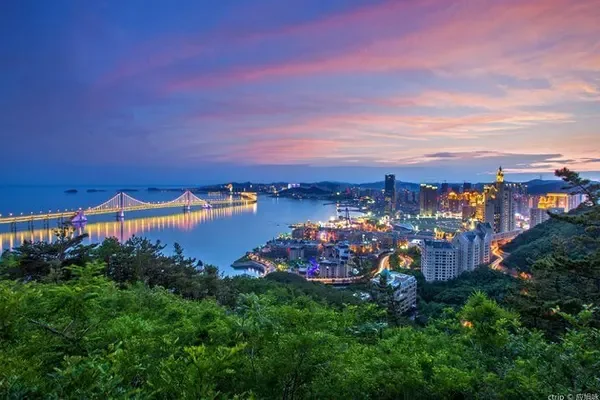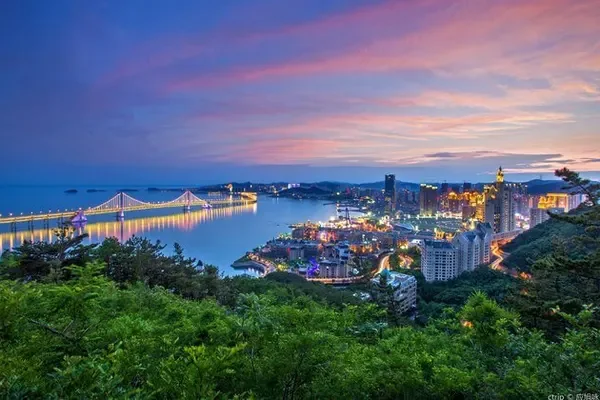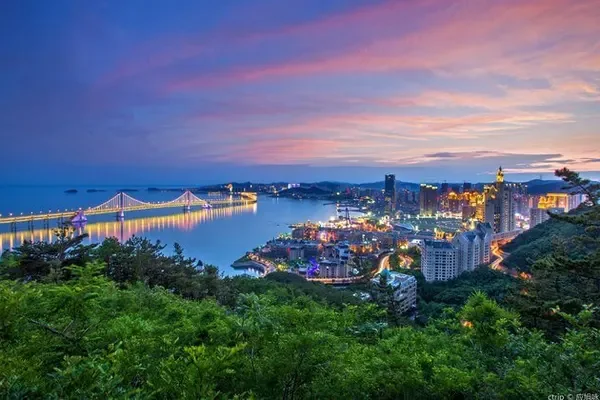I have been fond of traveling since I was in college. At that time, I always wandered around various parks and scenic spots in Chengdu every weekend or holiday, so for the students, I am a living map of Chengdu and a travel guide! After graduating, I liked to travel to more and farther places. I can be seen going out every year. I took a lot of photos but never wrote a travel note.
Tibet is an indispensable part of many people's travel plans, and it is also a must-see point in my journey. Every year, I see too many travel posts about Tibet, and every time I am amazed by the natural beauty and the longing magic, and at the same time, I always say to myself: I must go to Tibet.
I finally realized my Tibetan dream this year! Had a beautiful self-driving tour! That feeling of having a dream come true is like having accomplished a major event in your life. The reason why we say this is that Tibet seems to be far away from us in our daily life. Factors such as time, body, distance, family, work and so on make it difficult for us to leave so easily. I think this experience should be documented.
I have been preparing since June. The weather in Chengdu this year is too rainy. I pay attention to the road conditions of the group news every day. I am very anxious when I see landslides, mudslides, traffic jams, etc. along the way. Whether the trip went smoothly, the friends have been discussing whether to travel on time or to postpone it, and then the weather improved in the next two or three days, and finally decided to travel on time on July 15th!
Comment on a few dry goods first:
"Chuan Jin Qing Chu" is a classic route. Most of the self-driving tours take this route. We are purely self-driving tours, not chartered cars, but there are members who share the fuel costs, so the cost-effectiveness is quite high after the trip. In the last article of the travel notes series, I will also summarize the fuel and toll fees. First attach a few dry goods pictures.

Route map for this trip:

Altitude map for this trip:

Mileage map for this trip:
day1: Chengdu - Ya'an - Luding
It started to rain lightly on the day of departure. Because there were members from other places, we decided to have a ritual hot pot at noon and then set off in the afternoon. During the meal, everyone can get acquainted with each other, introduce and exchange those, and after the meal, we took our first group photo.

Haha, I'm wearing the hat.
Depart after dinner, the only expressway on the Sichuan-Tibet line, the expressway toll from Chengdu to Ya'an is 53, the only toll section on the way out.
When we arrived in Luding, the Luding Bridge was closed because of the flood. We were lucky and opened again when we went. The next morning, my friends went to Luding Bridge to check in.


The people walking on the bridge swayed on it, like swinging on a swing. The sound of the water was very loud, and one looked down the bridge, making one's heart tremble.
day2: Luding - Kangding - Xindu Bridge - Yajiang
We walked slowly in the first two days. Considering that the road conditions were in a state of waiting and watching along the way, we were quite frightened. After all, we were discouraged and questioned by many friends before we set off.
We had dinner in Kangding at noon. I still like the small town of Kangding very much. We found a "chicken feather shop". There are also a lot of chicken feather shops in Chengdu. It is the same type as the people's canteen. The environment here is also good. The nine of us ate there More than 200, which is very cheap per capita. We took our second group photo in the store.

Haha, the blurred girl in the back row is me.


Going to the above picture, there was a small blockage for a while, but fortunately it was not serious, so we continued to move forward and arrived at Xindu Bridge
Xinduqiao is known as a "photographer's paradise". Xinduqiao in summer is relatively refreshing and not as colorful as autumn. When passing through this section of the road, the weather is very beautiful, the sun, blue sky, and white clouds are our companions, allowing us to have a wave of beautiful scenery photos!





I didn't have time to retouch the pictures. These photos were taken with mobile phone filters and put together the pictures below, so I'll just take a look!
day3: Yajiang - Litang - Batang - Mangkang
We set off from Yajiang in the morning, and it was a coincidence that we did not choose to continue on our way after arriving at Yajiang the day before. The next day we learned that there was a landslide just 10 to 20 kilometers in front of Yajiang. Fortunately, we had repaired it when we set off in the morning. We successfully avoided the depression of being stuck on the road, so we are relatively smooth again.
Not long after starting from Yajiang, you will pass the famous "Eighteen Bends of Heavenly Road", which reminds me of "Eighteen Bends of Mountain Road".


Arrive in Litang at noon and go to Batang after dinner
Litang is a place that you will fall in love with when you go there. There are beautiful scenery along the way. The road spreads among the mountains of the vast Litang Plateau. Both sides of the smooth road are clean and vast grasslands, accompanied by the breeze. Here, driving a car, imagining myself riding a horse in this beauty, this place is also one of the places that impressed me the most on this trip.


After arriving in Batang, it was still early, so I chose to continue to Mangkang
Batang is the last important town in western Sichuan, separated from Tibet by the Jinsha River. After crossing the Jinsha River Bridge, you will enter the Tibetan area~


(insert a strategy)
Please pay attention: Batang-Magkang, this is the worst road, there is no one. The road conditions are very bad, landslides everywhere and road repairs are almost all unilateral, very congested! ! Be careful of falling rocks on the left, and prevent landslides from entering the river on the right. Anyway, it is quite scary for ordinary cars, ordinary driving skills and general psychological quality. In this place, we experienced the helplessness of traffic jams for three hours, and also experienced Regret for members leaving the group.
At that time, everything was a bit messy, and I didn’t take photos of the traffic jams. The experience members at night quit the return journey, and the traffic jams were depressed. It was already 12 o’clock in the evening when we arrived in Mangkang, and I couldn’t sleep. I forced myself to sleep. The next day In the morning, we will discuss how to move forward.
day4: Mangkang - Zuogong - Bangda
Due to the turmoil of the previous day, it was agreed to start again this afternoon. Two members left with a car, and the other two members only chartered a new car to continue with us.



Bangda: It is the intersection of the Sichuan-Tibet South Line and the North Line. It used to be the place where the famous "Tea Horse Road" must pass. It is located between Zuogong County and Basu County on National Highway 318, with an altitude of 4300 meters. The accommodation conditions are very poor, and it is not recommended to stay here. We can only walk here because we set off in the afternoon, so we just made up for one night.
day5: Bangda - Basu - Ranwu - Bomi - Tongmai
You will see many cyclists along the Sichuan-Tibet line
There are many ways to enter Tibet
But hiking and cycling are really admirable!
What kind of belief made you risk your life?
What kind of will keeps you going forward?
You are looking at the scenery, but you are also the most unique scenery!

Then, we came to the famous "72 Turns", which is located between Bangda and Basu. It is not a scenic spot, but almost all people who pass by here for the first time will stop for a while when they reach the commanding heights of the road. For many riders or riders, it is precisely because of its danger that it is more challenging. Pedestrians who pass by this road every year are full of admiration for this road. When cars and cyclists drive on this sky road, there is only "soul-stirring" exclamation left.


Although the Sichuan-Tibet line is known as a natural danger, there are actually only a few places that are the most dangerous, and the passing Jueba Mountain should be ranked first. There are many steep slopes, narrow roads, and many bends in that section. The mountains on both sides are desolate and hard, giving people the feeling of high mountains and deep valleys. The Sichuan-Tibet natural danger Jueba Mountain will definitely make people feel exciting and shocked! Only when you are on the scene, can you feel the majestic atmosphere of nature and the uncanny workmanship. Anyone who comes here for the first time is overwhelmed. It's a feeling of traveling in a geographic magazine!



Passing through Ranwu Lake, I don’t know if it’s the weather or something, it’s not as beautiful as I imagined.


Bomi seems to be a section of the road that is relatively easy to congest. From the news in the group before we set off, this section of the road is blocked every day. I thought the road conditions in the Bomi section were very bad, but the road in the Bomi section is so good. , and very lucky that we passed Bomi without any traffic jam at all and passed smoothly.




The two bridges here in Tongmai are quite good. I heard that it used to be the famous "Tongmai natural danger". The project is up. When a vehicle crosses the bridge, you can feel the bridge trembling slightly, let alone the previous situation.





Arriving in Lulang, Lulang town is well built and very beautiful. I heard that Lulang has Tashigang Village with strong folk customs and famous stone pot chicken, but the taste of stone pot chicken is really not good, anyway. All of us in the same industry think it is not delicious, and it is very expensive, 300 for a small pot, so let's try it when you get to that place!




To be continued, if you want to know the following, please click on the homepage to serialize (2)


